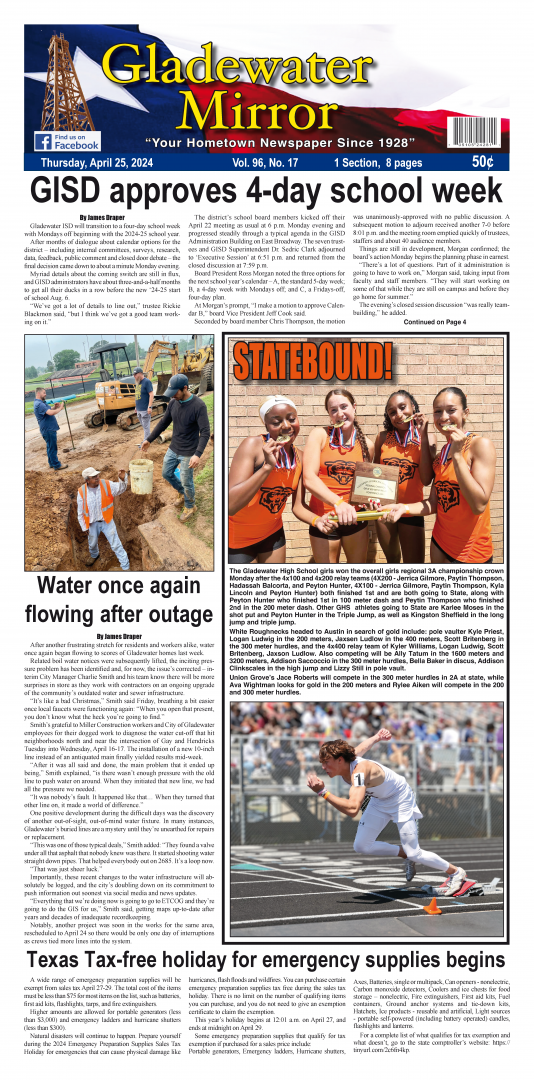The bad news won’t come as a surprise – there’s more wrong at Gladewater’s dam than meets the eye.
There’s a silver lining, though, since identifiable problems strengthen the city’s case for financial assistance to repair the decades-old structure that both protects the community’s sole water source and prevents the water from overwhelming everything downstream.
There are some key issues that might need to be addressed sooner rather than later, even if it means dipping into the city’s coffers. The alternative – an ‘unlikely’ but potentially catastrophic failure of the dam – would be unimaginably more costly.
As the city’s emergency coordinator, Gladewater Fire Chief Mike Simmons and city employees have been steadily ramping up repairs, maintenance and monitoring of the Lake Gladewater Dam, both the concrete spillway and the earthen structure. Working with engineers from Schaumburg & Polk, they’re collecting data and updating records to get a full understanding of the state of the mixed-material barrier and to get in compliance with state regulations.
The most recent foray saw the team suit up and dive into the spillway basin again, and the effort revealed more flaws.
“The left wing wall has a huge cavity behind it. It’s a good 10- to 15-foot void space where it’s just washed out, not really any dirt behind the concrete, which is why it’s sinking in,” Simmons said.
A few months back, the group discovered a similar problem area on the opposite side, abutting the earthen dam. All the data points to the same conclusion – the structure’s headed for a downgrade. Simmons and other officials have previously described the ‘high hazard’ state of affairs at the lake, and a ‘Poor’ rating’s ahead.
Meanwhile, “We got our flood models submitted to us with a list of structures that would be impacted” in the event of a failure, Simmons confirmed, extending the models as far as Highway 31/259. “It’s going to impact all the way through Gregg County,” with consequences far beyond the area as well, overflowing roads, railroad tracks, major utilities, homes, businesses and people. All things considered, “We’ll be working with our Genasys system to create messages for ‘Stand By Evacuation’ alerts and the ‘Evacuation’ alerts for the buildings that will be affected downstream.”
The flood models are meant to be updated every five years and are included in broad reporting to the Texas Commission on Environmental Quality and the Texas Department of Emergency Management. The two agencies are a major artery for state and federal mitigation funds.
Broadly, “You take the number of structures impacted plus the condition of the dam, and all that goes into a scoring – the worst dam gets the money first, and they go down a list until all the money’s spent.”
A key next step will be to prioritize repairs.
“That’s going to be for the engineers to decide,” Simmons said. “Obviously, the whole structure needs tending to. We’re just now getting the data and beginning those conversations as to what the plan is going forward.”
– By James Draper










